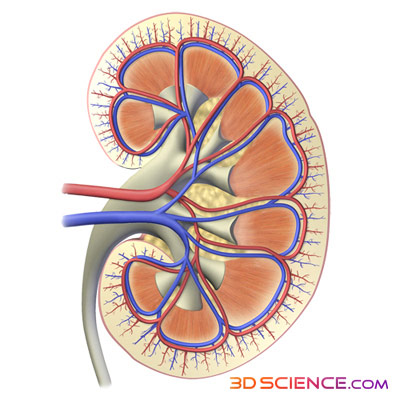Kidney Stones Landing Increasingly More Women in ER

The percentage of U.S. women who visit an emergency room for kidney stones is on the rise, a new study suggests.
Over a three-year period, the rate of emergency-department visits for kidney stones among women increased by 9.2 percent, from 218 visits per 100,000 women in 2006 to 238 visits per 100,000 women in 2009, the study found.
While men's rate of emergency-department visits due to kidney stones remains higher than women's, the rise over the last few years was less pronounced in men: Between 2006 and 2009, the rate increased just 3.6 percent, from 362 visits per 100,000 men in 2006 to 375 visits per 100,000 men in 2009.
The study adds to a growing body of evidence suggesting that the rate of kidney stones in the United States is increasing. A 2012 U.S. study found that the rate of people with kidney stones nearly doubled over a 16-year period, from one in 20 in 1994 to one in 11 in 2010.
One reason for the rise may be an increase in the rate of obesity, which is a risk factor for kidney stones, said Dr. Khurshid R. Ghani, a urologist at the Henry Ford Health System's Vattikuti Urology Institute in Detroit and co-author of the new study.
However, despite the rise in the rates of kidney-stone emergency-department visits for both men and women, the rate of hospitalization due to kidney stones remained about the same.
One reason that the rate of hospitalization did not rise simultaneously may be that doctors today can diagnose kidney stones faster, and more accurately, than in the past, the researchers said.
Get the world’s most fascinating discoveries delivered straight to your inbox.
"Today, the emergency-room physician and urologist have access to better diagnostic tools that allow for a more precise diagnosis," Ghani said. "We use a CT [computed tomography] scan, which is a quick test that allows for an immediate diagnosis."
Also, better treatments for kidney stones may allow for more patients to be treated without being admitted to the hospital, Ghani said.
However, costs of treating kidney stones in the emergency department rose from $3.8 billion in 2006 to $5 billion in 2009, which may be related to the increasing use of CT scans for diagnosis, the researchers said. "While they're wonderful tools of technology that allow an accurate diagnosis, they are expensive," Ghani said.
The study was published online Aug. 8 in the Journal of Urology.

Rachael is a Live Science contributor, and was a former channel editor and senior writer for Live Science between 2010 and 2022. She has a master's degree in journalism from New York University's Science, Health and Environmental Reporting Program. She also holds a B.S. in molecular biology and an M.S. in biology from the University of California, San Diego. Her work has appeared in Scienceline, The Washington Post and Scientific American.


